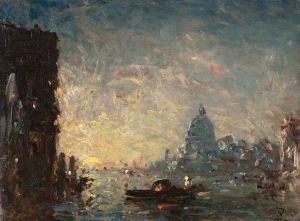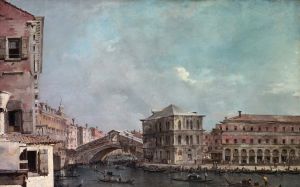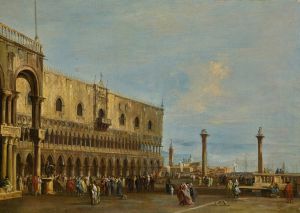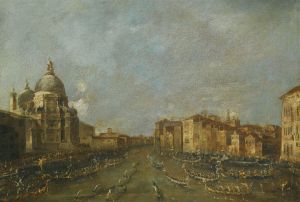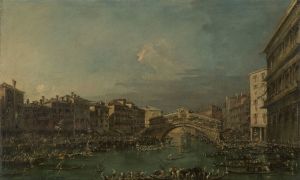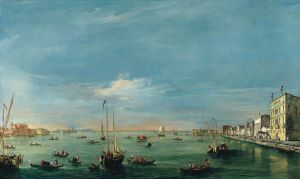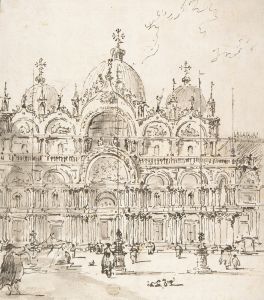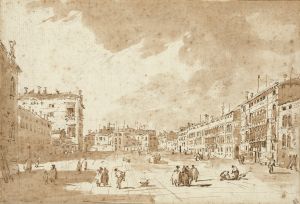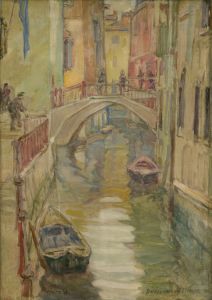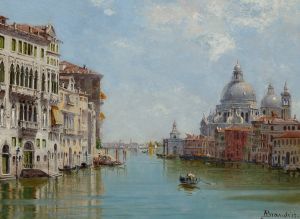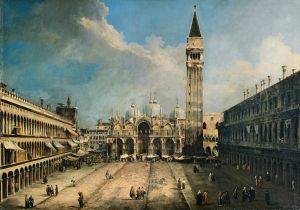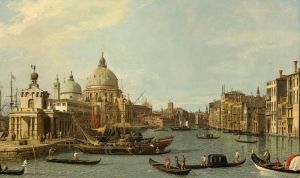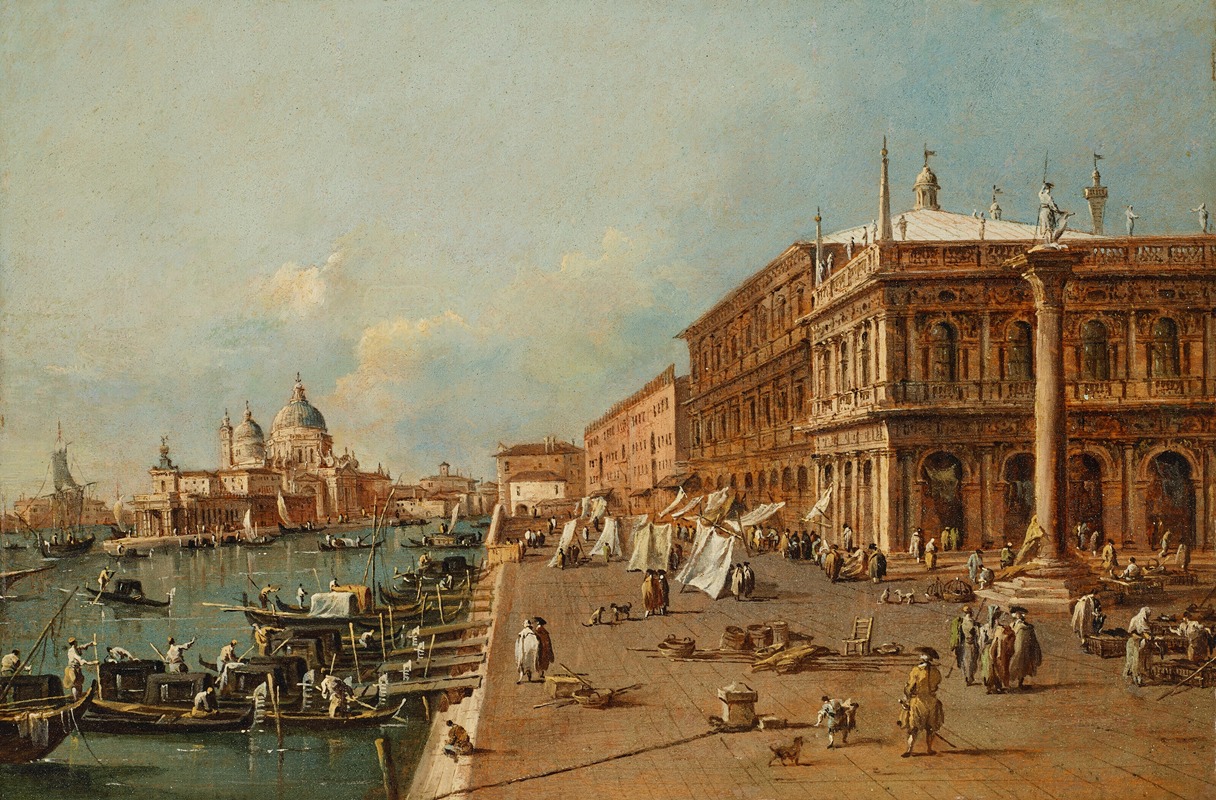
Venice; The Molo with the Libreria, the Punta della Dogana and Santa Maria della Salute
A hand-painted replica of Francesco Guardi’s masterpiece Venice; The Molo with the Libreria, the Punta della Dogana and Santa Maria della Salute, meticulously crafted by professional artists to capture the true essence of the original. Each piece is created with museum-quality canvas and rare mineral pigments, carefully painted by experienced artists with delicate brushstrokes and rich, layered colors to perfectly recreate the texture of the original artwork. Unlike machine-printed reproductions, this hand-painted version brings the painting to life, infused with the artist’s emotions and skill in every stroke. Whether for personal collection or home decoration, it instantly elevates the artistic atmosphere of any space.
"Venice; The Molo with the Libreria, the Punta della Dogana and Santa Maria della Salute" is a celebrated painting by Francesco Guardi, an Italian painter of the Venetian school. Guardi is renowned for his vedute, or detailed paintings of cityscapes, which capture the essence and atmosphere of Venice in the 18th century. This particular work is a prime example of his ability to depict the grandeur and vibrancy of Venice.
The painting portrays a panoramic view of the Molo, the waterfront area near the Piazza San Marco, one of the most iconic and bustling parts of Venice. The Molo is depicted with its characteristic architectural landmarks, including the Libreria (the Library of St. Mark), which is an important cultural and architectural site in Venice. The Libreria, designed by Jacopo Sansovino, is known for its classical Renaissance architecture and houses a vast collection of manuscripts and books.
In the background, the painting features the Punta della Dogana, the triangular tip of the Dorsoduro district where the Grand Canal meets the Giudecca Canal. This area was historically significant as the customs house of Venice, where goods entering the city were inspected and taxed. The Punta della Dogana is depicted with its distinctive tower and the golden globe sculpture, which adds to the historical authenticity of the scene.
Dominating the skyline in the painting is the majestic church of Santa Maria della Salute, one of Venice's most famous landmarks. The church was built in the 17th century as a votive offering for the city's deliverance from a devastating plague. Its grand Baroque architecture, designed by Baldassare Longhena, is characterized by its massive dome and intricate façade, which Guardi captures with remarkable detail and accuracy.
Francesco Guardi's technique in this painting is notable for its loose brushwork and vibrant use of color, which convey the lively atmosphere of Venice. His ability to capture the play of light on the water and the reflections of the buildings adds a dynamic quality to the scene. Guardi's work is often compared to that of his contemporary, Canaletto, but while Canaletto's vedute are known for their precise and meticulous detail, Guardi's paintings are celebrated for their more impressionistic and atmospheric qualities.
"Venice; The Molo with the Libreria, the Punta della Dogana and Santa Maria della Salute" is a testament to Guardi's skill in capturing the essence of Venice. The painting not only serves as a historical record of the city's architecture and urban landscape but also as a vivid portrayal of the daily life and activity that characterized Venice in the 18th century. Today, Guardi's works are highly valued for their artistic merit and historical significance, and they continue to be admired by art enthusiasts and historians alike.





